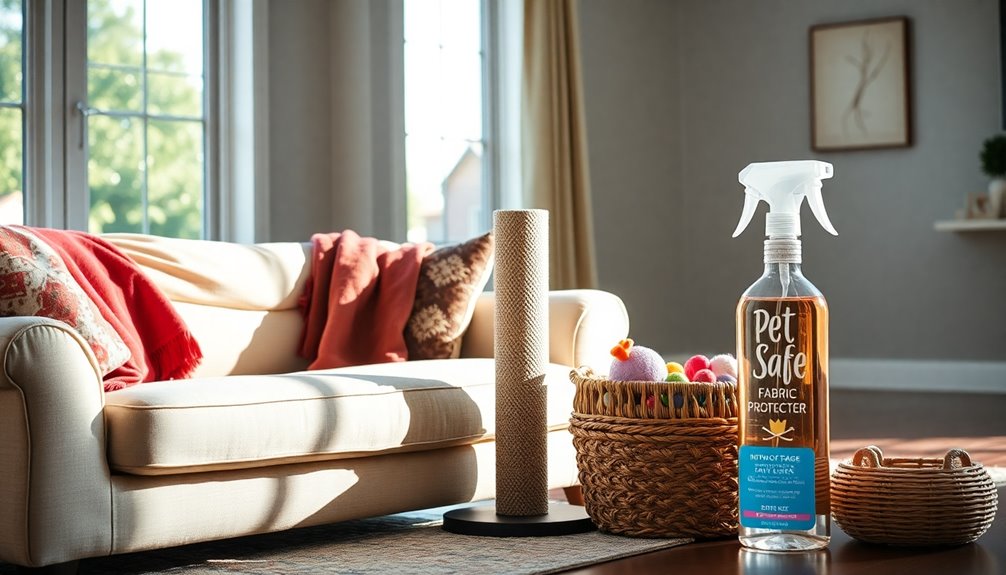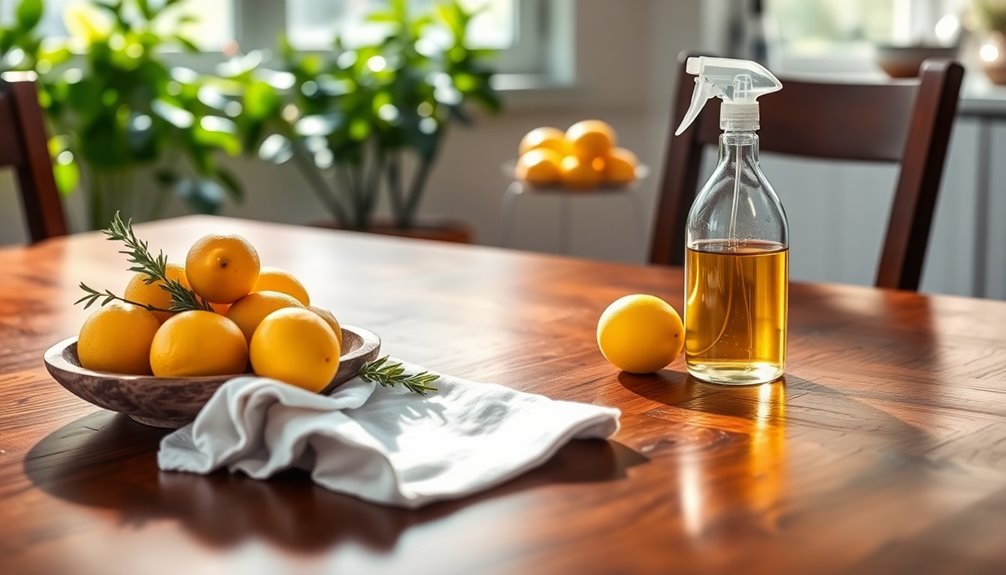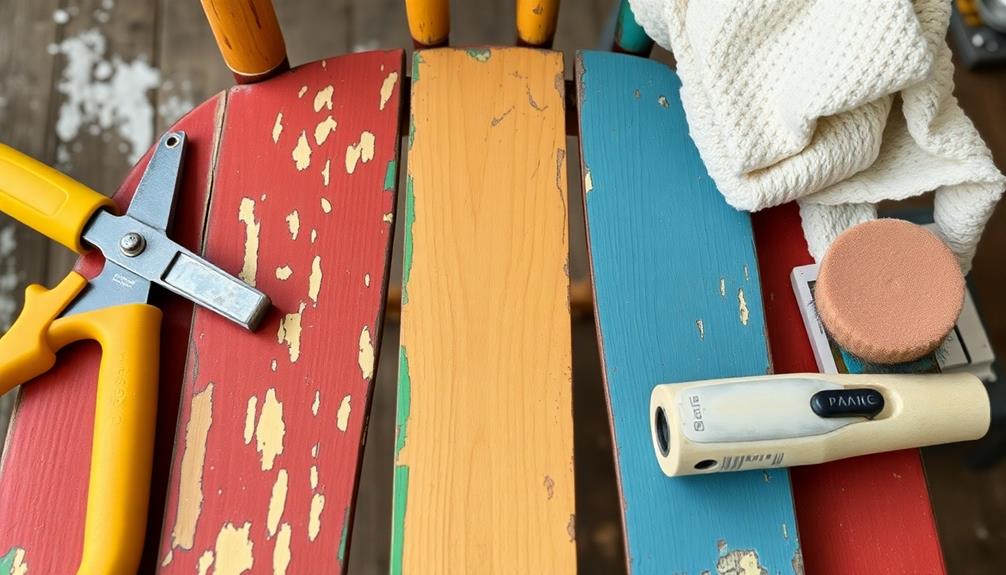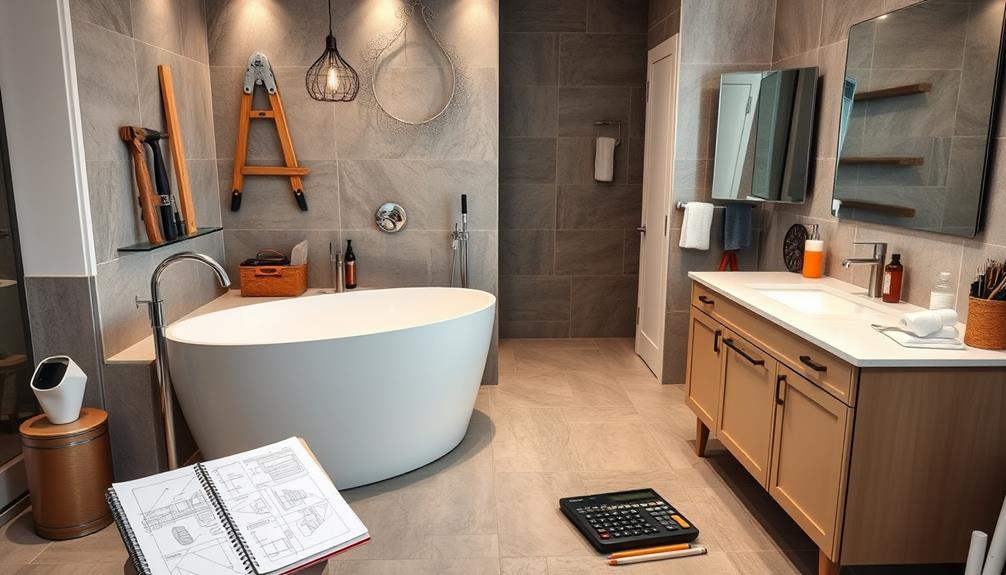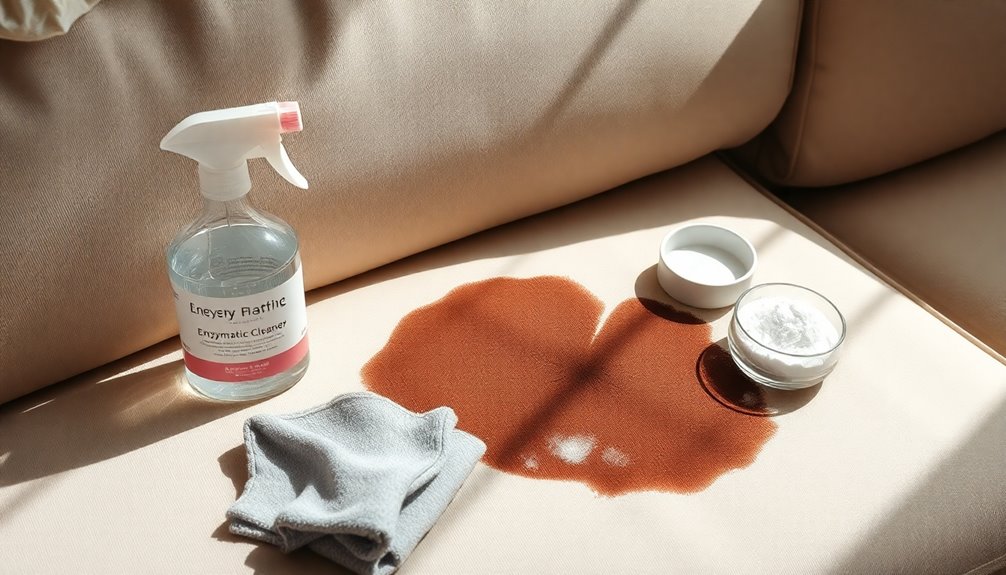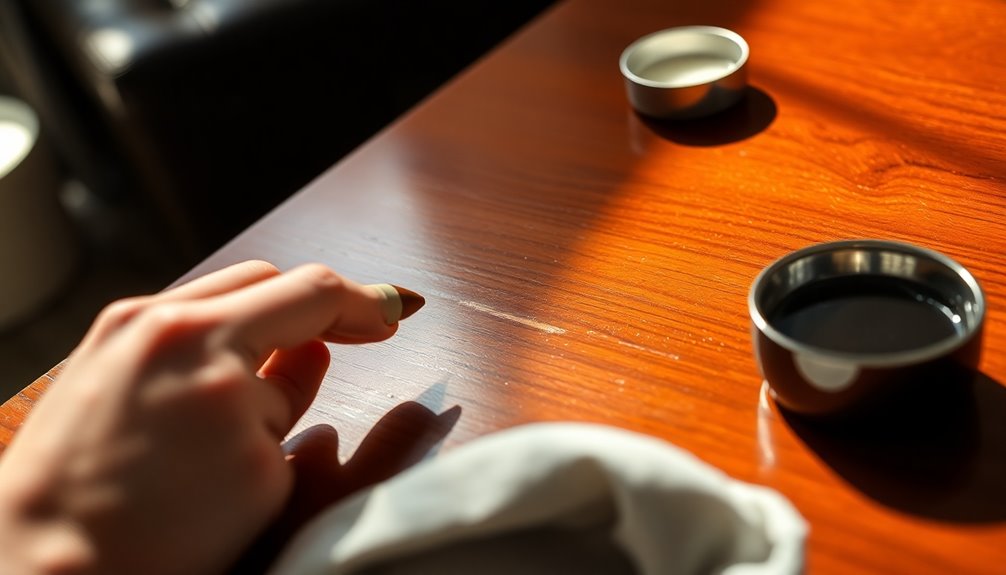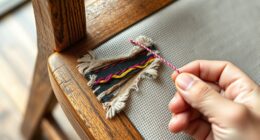To protect your sofa from your cat, start by using durable, washable covers and placing scratching posts nearby. Regularly trim your cat’s nails to reduce damage. Choose tightly woven fabrics like microfiber that resist scratching, and avoid delicate materials like silk. You can also apply protective films and use Sticky Paws tape on vulnerable areas. Lastly, inspect your sofa frequently for wear and keep it clean to discourage scratching. By employing these methods, you can keep your sofa safe while creating a cozy space for your cat. There’s so much more you can discover to enhance your efforts! Additionally, consider teaching your cat alternative behaviors by rewarding them for using the scratching posts rather than your sofa. To maintain the sofa’s appearance and integrity, knowing how to clean fabric sofas is essential; make sure to follow the manufacturer’s care instructions and use suitable cleaning products. You can also vacuum regularly to remove hair and debris, which will help keep both your sofa and your cat happy and healthy.
Key Takeaways
- Use durable, washable sofa covers to shield against cat claws and reduce damage.
- Install transparent Clawguard Furniture Shields on vulnerable areas to prevent scratching.
- Place scratching posts nearby to redirect your cat's scratching behavior away from the sofa.
- Regularly trim your cat's nails every two to three weeks to minimize potential damage.
- Apply Sticky Paws double-sided tape on furniture surfaces to deter scratching effectively.
Introduction
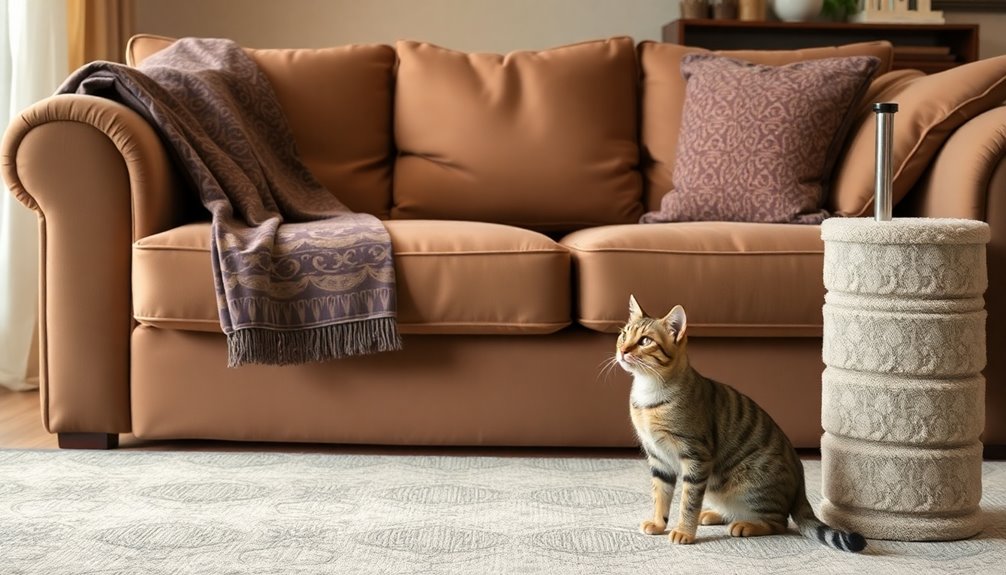
Taking care of your sofa goes beyond just protecting it from scratches; it also involves regular inspections and proper cleaning techniques. By understanding fabric-specific care and knowing how to treat cat urine stains, you can keep your furniture looking fresh and new. Let's explore some practical steps to ensure your sofa remains safe from your feline friend.
Routine Upholstery Inspections
To keep your sofa in top shape and protect it from your cat's antics, regular upholstery inspections are essential. Schedule routine inspections every few weeks to catch any signs of wear and tear, like frayed threads or loose seams, before they worsen. Pay special attention to scratching marks or areas where your cat frequently scratches; these spots might need additional protective measures to prevent damage.
Assess the fabric type of your sofa, as tightly woven materials tend to resist scratching better than delicate fabrics. If you notice any scratches or signs of wear, consider installing furniture guards or using slipcovers to shield your upholstery. Also, keep an eye out for debris or hair buildup on your furniture. This can attract your cat and encourage scratching behavior, so it's crucial to maintain a clean environment.
Fabric-Specific Cleaning Techniques
When it comes to preserving your sofa's appearance and longevity, understanding fabric-specific cleaning techniques is crucial. For microfiber sofas, a simple mixture of water and vinegar in a 1:1 ratio works wonders for removing stains. This fabric is moisture-resistant, making maintenance easy. Velvet fabric, on the other hand, requires a gentler touch; use a soft brush to lift dirt and a damp cloth to dab at stains, being careful not to over-saturate, which can ruin its texture.
If you have tightly woven fabrics, a vacuum with an upholstery attachment is your best bet for removing cat hair without causing damage. For stains, spot cleaning with a mild detergent should do the trick. When dealing with leather upholstery, wipe it down with a damp cloth and condition it regularly to prevent drying and cracking. Remember that while leather is less prone to scratching, it can still suffer from excessive moisture.
Finally, with delicate fabrics like silk or linen, always test any cleaning solution on a hidden area first. These materials are sensitive to harsh chemicals, and you want to avoid any discoloration or damage.
Treating Cat Urine Stains
Even with the best cleaning techniques, accidents can happen, especially when you have a cat. Cat urine stains can quickly become a nightmare if not treated promptly, leading to lasting odors and damage to your upholstery. The first step is to act fast. Blot the affected area with paper towels to absorb as much cat urine as possible before applying any cleaning solution.
For effective removal, use enzymatic cleaners. These specialized products break down urine proteins and eliminate odors rather than just masking them. Follow the instructions on the cleaner for the best results. If you encounter stubborn stains, a natural alternative is a mixture of vinegar and water. Just remember to rinse the area thoroughly afterward to prevent any residue from forming.
Before applying any cleaning solution, always test it on a small, inconspicuous area of your upholstery to ensure it won't cause discoloration or damage. By addressing the stains quickly and effectively, you can protect your sofa and maintain a fresh-smelling home, keeping your feline friend and your furniture happy.
Sofa Guarding Techniques
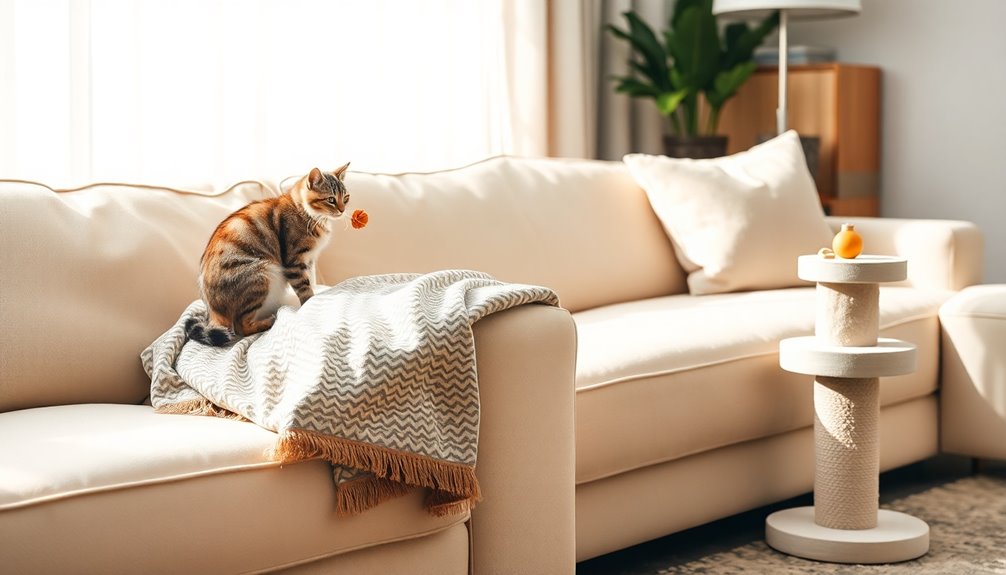
To keep your sofa safe from your cat's claws, you'll want to explore effective furniture scratch resistance techniques. Consider using decorative fabric protection solutions that not only guard against scratches but also enhance your living space. Additionally, opting for durable fabrics can provide long-lasting protection while maintaining the look you love.
Furniture Scratch Resistance Techniques
Protecting your sofa from cat scratches can be achieved through several effective techniques. Start by using durable, washable sofa covers that can withstand cat claws, acting as reliable furniture protectors from cats. You can also install transparent Clawguard Furniture Shields on your sofa's corners and sides for an effective barrier against scratching, all while keeping your furniture's aesthetic intact.
To redirect your cat's natural scratching behavior, place scratching posts near the sofa. This encourages them to use these designated areas instead of your furniture. Additionally, applying Sticky Paws double-sided tape on your sofa creates a deterrent that discourages scratching due to its sticky sensation. It's easy to remove without leaving any residue.
Regularly trimming your cat's nails every two to three weeks can significantly reduce the potential for furniture damage. Consider using nail caps as a temporary, non-invasive solution to further protect your sofa. These simple yet effective furniture scratch resistance techniques will ensure your sofa remains in pristine condition while keeping your feline friend happy.
Decorative Fabric Protection Solutions
Incorporating decorative fabric protection solutions can significantly enhance your sofa's resilience against cat scratches while adding style to your living space. One effective method is utilizing sofa covers made from durable, tightly woven fabrics. These covers not only shield your furniture from scratching but also come in various colors and patterns, allowing you to maintain an appealing aesthetic.
Another option is applying transparent protective films, like the FTSTC Anti Cat Scratch Furniture Protector, to vulnerable areas of your sofa. These films create an invisible barrier against claw damage without compromising the overall look of your furniture. Additionally, consider using cat scratch guards or placing scratching posts nearby to redirect your cat's scratching behavior, minimizing wear and tear.
Regularly trimming your cat's nails can also play a crucial role in protecting your sofa. Shorter nails are less likely to puncture or snag decorative fabric. By combining these protective measures with the right choice of materials, you can create a stylish yet resilient environment that keeps both your furniture and feline friends happy.
Using Durable Fabrics
Choosing durable fabrics is essential for safeguarding your sofa from cat damage. Opt for tightly woven materials like microfiber or canvas; these are more resistant to claw penetration than delicate fabrics such as silk or velvet. When selecting your upholstery, consider darker colors or patterns that can better camouflage wear and tear caused by scratching and daily use.
Durable synthetic materials, like polyester blends, are another great option. They're designed to withstand scratching and are easier to clean than traditional fabrics. Additionally, you should look for upholstery treated with stain or scratch-resistant coatings that enhance durability and protect against claw damage.
It's also crucial to check the fabric's rub count—aim for at least 30,000 rubs. This number indicates the durability and resistance to wear from both pets and regular use, ensuring your sofa remains in great shape despite your cat's playful antics. By focusing on these durable fabrics, you'll create a more pet-friendly environment while keeping your furniture looking its best.
Upholstery Seam Reinforcement
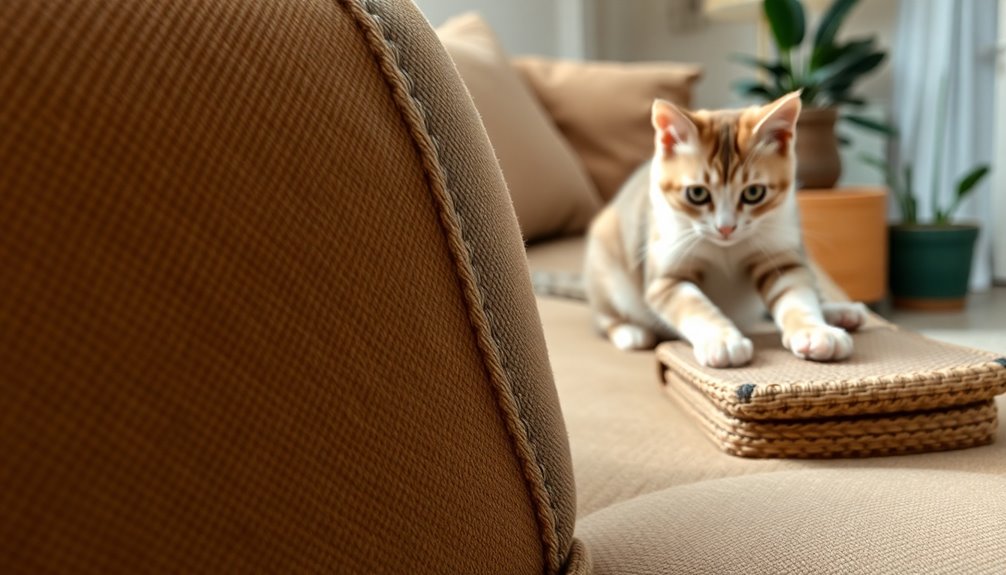
When reinforcing upholstery seams, you should also consider frame stability, as a sturdy base helps maintain the integrity of your sofa. Leather conditioning treatments can protect the surface while cushioning with eco-friendly materials provides comfort without compromising durability. These elements work together to ensure your sofa withstands your cat's antics while looking great.
Frame Stability Concerns
A strong upholstery seam is crucial for maintaining your sofa's frame stability, especially when you have a curious cat around. Cats love to scratch, and if your upholstery seams aren't reinforced, they can quickly become a weak point in your furniture. To enhance the durability of your sofa, use heavy-duty thread and double stitching for your seams. This extra reinforcement will help withstand potential claw damage.
Consider adding a layer of fabric or canvas underneath the upholstery to provide additional strength and support. This layer can act as a buffer, further preventing your cat's claws from reaching the frame. Don't forget to use upholstery adhesive to secure any loose seams—this ensures there are no gaps where claws can penetrate and cause damage.
Regularly inspect your sofa's seams for any signs of wear and tear. Catching these issues early allows for timely repairs, preventing further damage and preserving your sofa's integrity. When reupholstering, choose tightly woven fabrics that resist snagging and tearing. By prioritizing seam stability, you can protect your furniture and keep your sofa looking great for years to come.
Leather Conditioning Treatments
Maintaining your leather sofa involves more than just regular cleaning; conditioning treatments play a vital role in keeping it looking its best. Leather conditioning treatments help maintain the flexibility and suppleness of your leather upholstery, preventing unsightly cracks and wear that can result from your cat's scratching. By regularly applying a high-quality leather conditioner, you create a protective barrier that makes it harder for cat claws to penetrate the surface, ultimately protecting your furniture.
You should condition your leather every 6 to 12 months, depending on usage and exposure to elements, for optimal protection against wear and tear. Additionally, consider reinforcing the upholstery seams with durable thread and adhesives. This not only enhances the strength of your leather furniture but also makes it more resistant to tearing and damage.
Utilizing a protective leather spray can provide an extra layer of defense against scratches and stains, prolonging the life of your upholstery. By investing in these leather conditioning treatments and seam reinforcements, you can ensure your sofa remains a beautiful centerpiece in your home, despite the antics of your feline friend.
Cushioning With Eco-Friendly Materials
Durability and sustainability come together when you choose eco-friendly materials for your sofa upholstery. By opting for fabrics like organic cotton or hemp, you create a durable surface that can withstand your cat's scratching. These materials not only reduce your environmental impact but also provide comfort and resilience.
To further enhance the durability of your upholstery, reinforce seams with extra stitching or use heavy-duty thread. This extra support can prevent fraying and tearing caused by feline claws, ensuring your sofa lasts longer. Additionally, consider upholstery treated with stain-resistant coatings. This will protect your sofa from spills and pet-related messes while maintaining an eco-conscious approach.
Incorporating recycled polyester into your upholstery can offer a resilient option that stands up to daily wear and tear, blending comfort with sustainability. Choosing tightly woven fabrics, like canvas or microfiber, minimizes the risk of claws snagging, providing a softer surface that both you and your pets will enjoy. With these eco-friendly strategies, you can create a stylish, pet-friendly space that doesn't compromise on durability. Moreover, selecting woods like oak for your furniture frame can further ensure longevity and strength against wear from pets.
Custom Fabric Choices
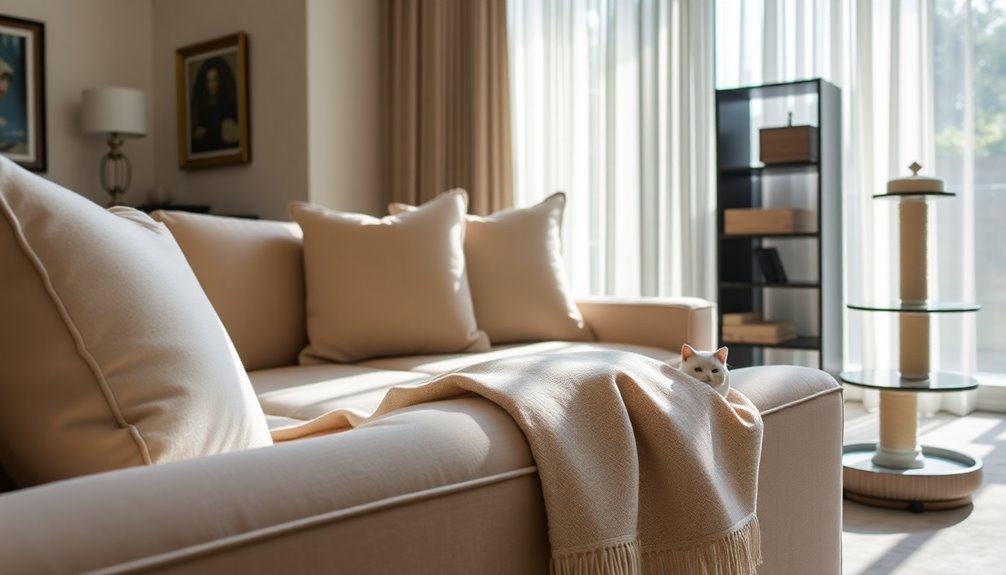
Choosing the right fabric for your sofa can make a significant difference in protecting it from your cat's claws. Opt for tightly woven fabrics like microfiber or canvas; they're more resistant to claw penetration and can withstand regular scratching. These durable upholstery choices hold up better against feline antics, ensuring your sofa remains intact.
Consider velvet as well. Its looped threads don't just provide a luxurious feel; they also make it less appealing for cats to scratch compared to delicate materials. Avoid fabrics like silk or thin cotton, which can easily snag and tear under a cat's claws. You want something that looks good but can also handle wear and tear.
Darker colored fabrics or those with patterns are smart choices too, as they can camouflage any minor damage caused by scratching, making it less noticeable. When selecting fabric, prioritize options that balance durability and aesthetic appeal. Investing in the right upholstery will not only protect your sofa but also provide a comfortable, stylish space for you and your furry friend. With the right fabric choices, you can enjoy your sofa while minimizing the impact of your cat's playful behavior.
Ongoing Fabric Maintenance Tips
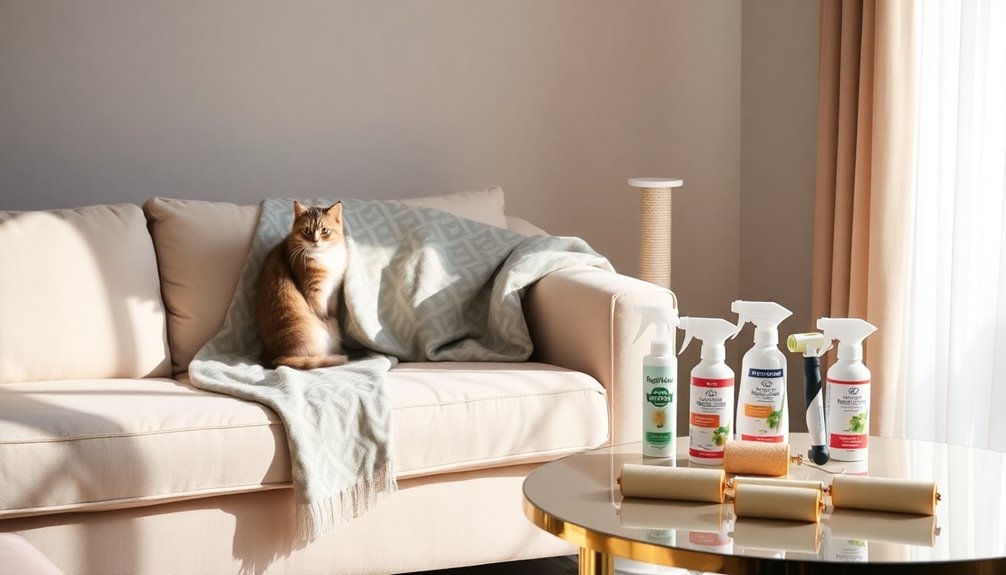
To keep your sofa looking its best and protect it from your cat's antics, regular maintenance is key. Start by vacuuming your sofa regularly to remove cat hair and debris. This simple step helps maintain its appearance and prolongs its lifespan. If your cat leaves a mark, don't wait—spot clean any stains immediately with a mild detergent and a soft cloth. This prevents stains from setting in and becoming tougher to remove later on.
Consider applying a fabric protector spray designed for upholstery. This creates a barrier against spills and stains, enhancing the fabric's resistance to damage. It's a proactive measure that can save you a lot of trouble down the line. Additionally, schedule routine professional cleaning every 6 to 12 months. This deep clean removes embedded dirt and allergens, keeping your sofa fresh and inviting.
Finally, make it a habit to inspect the fabric regularly for signs of wear or damage. By addressing any issues promptly, you can ensure timely repairs or treatments that extend the life of your upholstery. Consistent care will keep your sofa in top shape, even with a playful feline around!
Conclusion
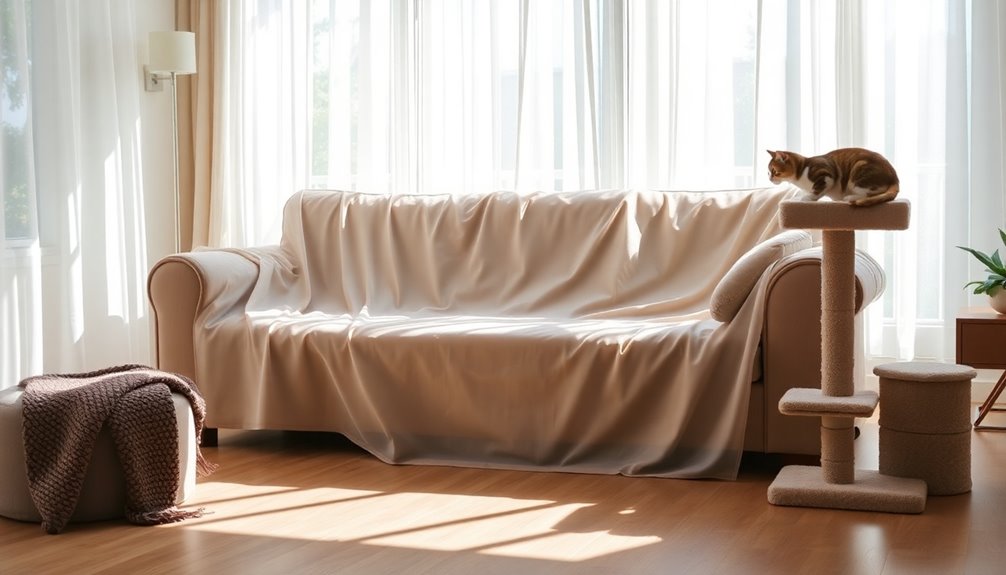
Protecting your sofa from your cat's playful tendencies requires a combination of proactive measures and regular maintenance. Start by investing in scratch guards for furniture, which can effectively redirect your cat's scratching behavior to designated surfaces. Placing scratching posts near your cat's favorite lounging areas will help satisfy their natural scratching instincts while keeping your sofa safe.
Regular nail trimming also plays a crucial role. Aim to trim your cat's nails every two to three weeks to significantly reduce potential damage. Additionally, consider applying double-sided tape or adhesive protectors on your sofa. The sticky sensation is unappealing to cats, acting as a deterrent against scratching.
When choosing your sofa, opt for durable fabrics like tightly woven materials or microfiber. These fabrics can withstand claw damage much better than delicate materials, which are more prone to tearing. By combining these strategies—using scratching posts, applying double-sided tape, and selecting durable fabrics—you'll create a harmonious living environment for both you and your feline friend. With consistent effort, you'll successfully protect your sofa while allowing your cat to express their playful nature.
Frequently Asked Questions
How Do I Protect My Sofa From My Cat?
To protect your sofa, start by using durable, washable furniture covers that can handle scratches and spills. Place scratching posts nearby to redirect your cat's natural instincts and keep them from targeting the sofa. Applying double-sided tape can make the fabric less appealing for scratching. Regularly trim your cat's nails every couple of weeks to reduce damage. With these steps, you'll maintain your sofa's appearance while keeping your cat entertained.
How to Make Your Sofa Cat Proof?
To make your sofa cat-proof, start by choosing durable fabrics like microfiber or tightly woven materials that resist claw damage. Add scratching posts nearby to redirect your cat's natural behavior. Use double-sided tape on the sofa to create an unappealing surface for scratching. You might also invest in furniture shields or protective covers. Regularly trim your cat's nails to minimize damage and keep your furniture looking great.
How Do I Keep Cats off My Couch?
To keep cats off your couch, start by placing scratching posts nearby to redirect their energy. Use double-sided tape or sticky paw protectors on the couch to deter them from scratching. Consider protective furniture shields that won't alter your couch's look. Regularly trim your cat's nails to minimize damage, and try natural deterrents like citrus-scented sprays to keep them at bay. These strategies can help maintain your couch's integrity while satisfying your cat's instincts.
How Do I Protect My Fabric Couch From Pets?
To protect your fabric couch from pets, you can use durable, washable sofa covers that fit snugly and look great. Consider installing transparent furniture guards on vulnerable areas to shield against scratches. You might want to apply double-sided tape, as the sticky sensation can deter pets from scratching. Regularly trimming your pet's nails and providing designated scratching posts nearby can also help redirect their natural behavior away from your couch.
